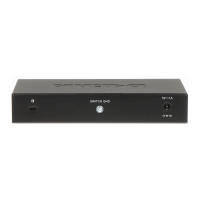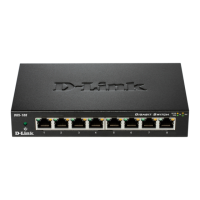DGS-1510 Series Gigabit Ethernet SmartPro Switch CLI Reference Guide
446
Not applicable.
Command Mode
EXEC Mode or Any Configuration Mode.
Command Default Level
Level: 1.
Usage Guideline
This command is used to display the NTP status.
Example
This example shows how to display NTP status.
Switch# show ntp status
Leap Indicator: Unsynchronized
Stratum: 16
Precision: -8
Root Distance: 0.00000 s
Root Dispersion: 0.10680 s
Reference ID: [INIT]
Reference Time: 00000000.00000000 Thu, Feb 7 2036 6:28:16.00000
System Flags: Auth Monitor NTP Kernel Stats
Jitter: 0.000000 s
Stability: 0.000 ppm
Auth Delay: 0.000000 s
Switch#
Display Parameters
The IP address of the peer.
The IP address of the Switch.
Our mode relative to the peer. This field can display the following
modes: active, passive, client, server, bdcast, and bdcastclient.
The peer’s mode relative to us.
Synchronized: The Switch is synchronized to an NTP peer.
Unsynchronized: The Switch is not synchronized to any NTP peer.
The total roundtrip delay to the primary reference clock.
The dispersion of the root path.
The IP address of the peer that the Switch is synchronized to.
Auth: Requires authentication to configure.
Monitor: Enables the monitor.
NTP: The clock discipline is enabled.
Kernel: The kernel support is enabled.
Stats: System status control.
Frequency stability (wander) (s/s).

